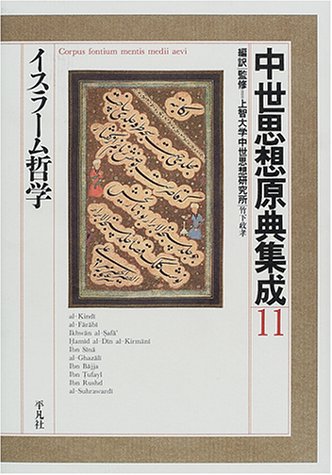2 0 0 0 OA コミュニケーションにおける表情および身体動作の役割
2 0 0 0 数学と哲学における学術情報流通(<特集>今後の学術情報流通)
- 著者
- 菊池 誠
- 出版者
- 社団法人情報科学技術協会
- 雑誌
- 情報の科学と技術 (ISSN:09133801)
- 巻号頁・発行日
- vol.63, no.11, pp.458-463, 2013-11-01
研究者にとって学術情報流通は研究成果の評価および研究活動の推進という観点から重要な役割を持つ。かつて,我が国の研究者には欧米の中心地から遠く離れて情報から孤立することによって様々な不利益を受けていたが,情報通信技術の発達と国際的な人的交流の活発化は,この学術情報流通の状況と我が国の研究環境を大きく変えている。しかし同時にその変化は学問の過度の均質化や競争,そして専門分野の孤立といった問題を生じさせる危険もある。本稿では数学と哲学における研究者にとっての学術情報流通の現状とその変革の可能性について論じる。
2 0 0 0 OA ヴァイシェーシカ哲学における過去・現在・未来 : 『キラナーヴァリー』の読解を中心に
- 著者
- 渡邉 眞儀
- 出版者
- 東京大学大学院人文社会系研究科・文学部インド哲学仏教学研究室
- 雑誌
- インド哲学仏教学研究 (ISSN:09197907)
- 巻号頁・発行日
- vol.21, pp.49-64, 2014-03-31
The Vaiśeṣika system is known for its static concept of time. In this system, time (kāla) is listed as one of the eternal and all-pervading substances like space (diś) and ether (ākāśa). According to Wilhelm Halbfass, time is marginalized in the classical Vaiśeṣika system completed by Praśastapāda. It plays the limited role in causal processes; it is a mere coordinate that determines when things are produced or destroyed and when events occur. It is neither a supreme cosmic power nor a fundamental cause of changes. In some aspects, the Vaiśeṣika concept of time seems similar to the concept of “Absolute Time” in modern physics. But there are major differences between them. According to Praśastapāda, the realization of time’s existence depends on our ordinary notions which relate to time, like “quick/slow” or “simultaneous”. It is not an “absolute” substance, but a theoretical requirement for such temporal and relative notions. Although time does not take on much importance in the system, there have been some attempts to justify its theoretical significance in it. For example, the concept of the three times, i.e. past, present, and future, is ignored in Praśastapāda’s original system, but his successors tried to formalize them in the system. In this paper, I investigate the theory of the three times which was established by one of the Praśastapāda’s commentators, Udayana, and consider how significant it is in the later Vaiśeṣika system. Basically keeping the classical Vaiśeṣika system, he used unique analystic tools, existence (sattā)/non-existence (abhāva), and a bearer (dharmin)/an attribute (dharma), by which the three times are definitely ordered. He also adopted more or less grammatical explanation so that his theory might agree with actual uses of temporal expression. I conclude that his theory successfully integrated both the classical Vaiśeṣika concept of time and the discussions in other schools such as Nyāya or Grammarian school. Although his achievement was remarkable, his theory had little influence on later Vaiśeṣika scholars. They formally cited only a part of his elaborate theory, and ignored the implication that time has a more prominent and dynamic function than Praśastapāda’s theory. They preferred to maintain Praśastapāda’s static view of time rather than admit Udayana’s innovative theory.
2 0 0 0 OA プセッロスによるプロクロス『プロティノス『エンネアデス』注解』抜粋(翻訳)
- 著者
- 西村 洋平
- 出版者
- 京都大学西洋古代哲学史研究室
- 雑誌
- 古代哲学研究室紀要 : HYPOTHESIS : The Proceedings of the Department of Ancient Philosophy at Kyoto University (ISSN:0918161X)
- 巻号頁・発行日
- vol.16, pp.26-43, 2014-02-14
2 0 0 0 「政治哲学」のために
- 著者
- 飯島昇藏 中金聡 太田義器編
- 出版者
- 行路社
- 巻号頁・発行日
- 2014
2 0 0 0 OA 哲学的認識論と自然主義
- 著者
- 松本 俊吉
- 出版者
- 日本哲学会
- 雑誌
- 哲学 (ISSN:03873358)
- 巻号頁・発行日
- vol.1996, no.47, pp.286-295, 1996-05-01 (Released:2009-07-23)
かつてカントやフッサールが夢見たような超越論哲学の理想-すなわち、いかなる先入見をも排去した純粋な反省的思惟によって我々の認識の<普遍的構造>を取り出し、それを基礎に万人の認識行為が準拠すべき規範を提示し、さらにそれに則って我々が現実に所有している信念や知識を正当化しようという企図-は、遂行不可能な非現実的な理想であったというのが、知識を論ずる近年の哲学的言説の共通了解となりつつあるようである。そうした趨勢に棹さすものとしては、歴史主義、文化相対主義、知識社会学、プラグマティズム、進化論的認識論、自然主義など様々な思潮が見出され、上述のような理想を抱く哲学的立場-本稿で我々はこれを<哲学的認識論>と呼ぶことにする-は、あたかも四面楚歌の如き状況に置かれている。ところでこれらの諸思潮は概して、哲学的認識論の立場を<廃棄>し、哲学的認識論固有の問題構制などは初めから存在しなかった、ないしは問題とするに値しないものであった、という類の論法をとりがちであるのに対し、私見によれば、自然主義の主張はその最も原理的なレベルで、哲学的認識論の立場と相対峙するように思われる。本稿は、こうした見地からこの両者の対立点を明確化し、それについて検討を加えつつ、哲学的認識論の基本的発想の、現代においてもなお否定し去ることのできない有効性を示そうとするものである。
2 0 0 0 OA <書評> 須藤訓任『ニーチェの歴史思想-物語・発生史・系譜学』
- 著者
- 竹内 綱史 タケウチ ツナフミ Takeuchi Tsunafumi
- 出版者
- 大阪大学大学院文学研究科哲学講座
- 雑誌
- メタフュシカ (ISSN:13426508)
- 巻号頁・発行日
- vol.43, pp.117-122, 2012-12-25
(大阪大学出版会、2011 年)
2 0 0 0 OA ホワイトヘッドの有機体の哲学における永遠的客体という概念
- 著者
- 稲村 文
- 出版者
- 京都大学大学院文学研究科哲学研究室
- 雑誌
- 京都大学文学部哲学研究室紀要 : Prospectus
- 巻号頁・発行日
- vol.13, pp.63-70, 2010-03
2 0 0 0 OA 内的懐疑論の懐疑的解決 - 渡邊氏の書評に応えながら -
- 著者
- 久米 暁
- 出版者
- 京都大学哲学論叢刊行会
- 雑誌
- 哲学論叢 (ISSN:0914143X)
- 巻号頁・発行日
- vol.33, pp.14-28, 2006
In response to Mr. Watanabe’s review of my Hume’s Scepticism, this paper elucidates Hume’s “sceptical solution” of his own “total scepticism”. Sceptical solution in general intends to solve scepticism or sceptical doubt by showing that the logical step from sceptical argument to scepticism makes use of some assumption external to our ordinary beliefs or common assertions. However, Hume’s Scepticism characterizes Hume’s “total scepticism” as an internal one, which is deduced only from some assumptions internal to our common sense. Instead of pointing out some external assumption, Hume’s “sceptical solution” of internal “total scepticism” states that it is proper we should indulge our emotive inclination to judge and believe, notwithstanding our rational scepticism.
2 0 0 0 行為における合理性と因果 (特集 意思決定,学習,合理性)
- 著者
- 山田 友幸
- 出版者
- 日本科学哲学会 ; 1968-
- 雑誌
- 科学哲学 (ISSN:02893428)
- 巻号頁・発行日
- vol.46, no.2, pp.1-16, 2013
2 0 0 0 OA 意図的行為の分析 : 逸脱的因果連鎖について
- 著者
- 対馬 大気
- 出版者
- 東京大学教養学部哲学・科学史部会
- 雑誌
- 哲学・科学史論叢 (ISSN:13446185)
- 巻号頁・発行日
- vol.16, pp.183-208, 2014-01
- 著者
- 杉山 直樹
- 出版者
- 日仏哲学会
- 雑誌
- フランス哲学・思想研究 (ISSN:13431773)
- 巻号頁・発行日
- no.6, pp.17-32, 2001
2 0 0 0 生物学史から見た死
- 著者
- 小川 眞里子
- 出版者
- 日本生命倫理学会
- 雑誌
- 生命倫理 (ISSN:13434063)
- 巻号頁・発行日
- vol.3, no.1, pp.66-70, 1993-07-20
「なぜ生物は死ぬのか」という問いには、二つの局面がある。一つは老化や死の原因を問うもので、二つめは、生物が死ぬべく運命づけられている理由を問うものである。本論のねらいは、これらの疑問に生物学がどう答えてきたかを歴史的に明らかにしようとするものである。第一点については、自然死と事故死を区別してかからねばならない。古代ギリシャ時代から、自然哲学者にしろ生物学者にしろ、基本的には自然死すなわち老化過程を扱ってきており、一般に、老化過程は何ものかが失われていく過程として捉えられてきた。第二点については、ドイツのヴァイスマンが19世紀後半の進化論的考察の中から初めて明らかにしたものである。それによって、死は不可避な、忌むべきことがらではなく、外界によりよく適応するために生物が獲得した進化論的戦術と見なされることになった。
2 0 0 0 IR 道徳判断と動機づけ問題の新たな側面 (道徳心理学の三つの話題)
- 著者
- 山本 圭一郎
- 出版者
- 京都倫理学会
- 雑誌
- 実践哲学研究 = Studies for practical philosophy (ISSN:02876582)
- 巻号頁・発行日
- no.33, pp.67-98, 2011-01
2 0 0 0 OA ヘーゲル『人倫の体系』の研究
- 著者
- 久田 健吉
- 出版者
- 名古屋市立大学
- 雑誌
- 人間文化研究 (ISSN:13480308)
- 巻号頁・発行日
- vol.1, pp.61-75, 2003-01-10
この研究は、ヘーゲル研究にとって画期をなすものと自負する。本論末尾の「緒論攷」でまとめたように、『人倫の体系』は難解な書、挫折の書、シェリング哲学残滓の書とされ、イエナ実在哲学との関連で、そういうものだろう程度の研究しかなされていない。しかし人倫の体系は、挫折どころか、ヘーゲル哲学の根幹をなす研究をなしている。ヘーゲルはこの書物で問題にしたのは、人間による「絶対的人倫の理念の認識」だった。この認識に至る道は概念の絶対認識を通してであって、この認識を通して民族(国家)を自覚し、人間は民族(国家)を形成するとする。そしてこれを可能にするものこそは「直観と概念の相互包摂」である。直観とは人間の主観性、概念とは客観世界。人間は己を貫こうとして、客観世界に己を対置する。 しかしこの時、真に己を貫こうとしたら、客観世界に即して己を貫くのでなければならないことを知る。これが「直観による概念の包摂」から「概念による直観の包摂」への逆転であって、こうあることが直観による概念の真の包摂だと人間は自覚する。これが人倫の体系で問題にされたことであった。ヘーゲル哲学は精神の哲学と言われる。この研究の上に立つなら、精神が実現してきた世界理性をわがものとしてこそ真の実存、真の哲学と説いていることがよく分かる。私はヘーゲル研究において、新たな地平を提起したと自負する。
- 著者
- 住吉 雅美
- 出版者
- 有斐閣
- 雑誌
- 法哲学年報 (ISSN:03872890)
- 巻号頁・発行日
- vol.2003, pp.109-120, 2003
2 0 0 0 OA 宗教哲学におけるウィトゲンシュタインの影響と可能性
- 著者
- 藤原 聖子
- 出版者
- 東京大学文学部宗教学研究室
- 雑誌
- 東京大学宗教学年報 (ISSN:2896400)
- 巻号頁・発行日
- vol.7, pp.129-146, 1990-03-20
【書評論文】
- 著者
- 松王 政浩
- 出版者
- 北海道大学高等教育推進機構 高等教育研究部 科学技術コミュニケーション教育研究部門(CoSTEP)
- 雑誌
- 科学技術コミュニケーション (ISSN:18818390)
- 巻号頁・発行日
- vol.14, pp.55-66, 2013-12
2 0 0 0 OA ホワイトヘッド哲学における生成と主体
- 著者
- 森 元斎 モリ モトナオ Mori Motonao
- 出版者
- 大阪大学人間科学部社会学・人間学・人類学研究室
- 雑誌
- 年報人間科学 (ISSN:02865149)
- 巻号頁・発行日
- vol.31, pp.1-14, 2010
2 0 0 0 イスラーム哲学
- 著者
- 上智大学中世思想研究所編訳・監修
- 出版者
- 平凡社
- 巻号頁・発行日
- 2000


